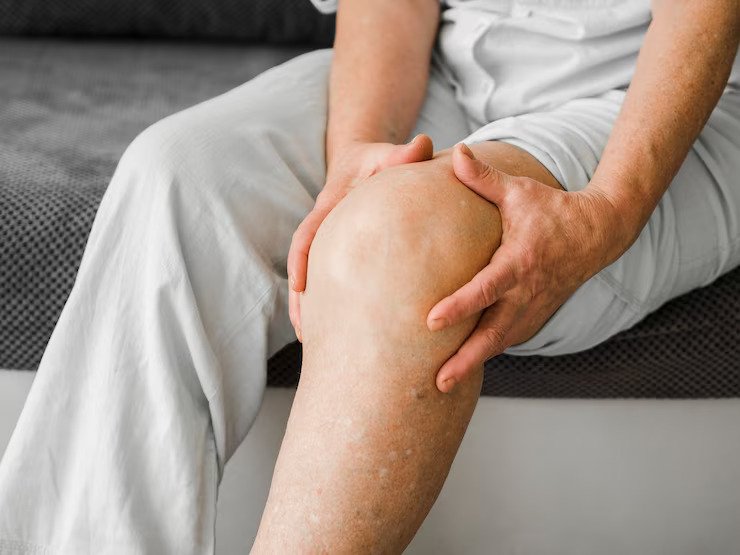Preventive Healthcare
Baker’s (Popliteal) Cyst: Symptoms, Causes, Prevention and Treatment
8768 Views
0

What is Baker's Cyst?
There is a structure called a popliteal fossa in the back of the knees. A baker's cyst is basically a fluid-filled sac that forms in the popliteal fossa. In adults, baker's cysts are most commonly connected with damaging conditions of the knees such as arthritis or gout.
If you have a baker's cyst, you may have some tightness, discomfort and pain in the back of the knees. It is most commonly seen in adults in the age group of 35 to 70 years old. It is commonly due to overuse or injury to the knees. Most of those who have baker cysts are asymptomatic. This means there are no symptoms shown by the cysts. This implies that baker's cysts are only visible during a routine examination or certain imaging techniques such as MRI or X-Ray.
Baker's Cyst Symptoms
Some people don't even notice a baker's cyst as it does not show any symptoms in them. Some of the common symptoms of a baker's cyst are:
- Swelling in the area behind the knee that looks like a water-filled balloon
- Pain in the knees
- Pain in the calf area
- Fluid accumulates around the knee area
- The knee joint buckles click or lock up
Causes of Baker's Cyst
Joint damage causes swelling in the knee. This leads to a baker's cyst. Examples of such joint damage include various conditions such as:
- Osteoarthritis
- Rheumatoid arthritis
- A meniscus tear in the knee
- Ligament tear in the knee
- Inflammation in the knee
- Gout (accumulation of excess uric acid in the knees)
Complications of Baker's Cyst
A baker's cyst might burst and cause leakage of synovial fluid into the calf area. This is kind of rare but if the baker's cyst bursts, the patient might experience very severe and sharp knee pain. There will be swelling in the knees, the calf area will turn red. You will have a sense of water trickling down the calf.
It will take up to 4 weeks for the body to absorb this fluid back into it. Your doctor will give you painkillers to manage knee pain. A blood clot in a vein may have caused the redness in the calf area. If you experience any of these symptoms, consult your doctor as soon as possible.
How is a Baker’s Cyst Diagnosed?
You need to get your baker's cyst diagnosed by a professional doctor. During the appointment, the doctor will prescribe several tests to confirm the baker's cyst and also discover the reasons behind it. These tests include:
- Taking your medical history: The doctor will ask you about any previous knee injuries. He will ask you about your entire medical history.
- X-Ray: This test can help diagnose if you have knee arthritis. This is because arthritis is one of the causes of a baker's cyst.
- MRI scan: This test uses magnetic waves to get a detailed image inside your body. This test can help the doctor further by knowing what is causing your baker's cyst.
- USG (Ultrasound): This diagnostic test can determine if the swelling is solid or contains any kind of fluid inside it.
Baker's Cyst Treatment
Home Remedies:
- Applying an ice pack: This can reduce inflammation in the knees. Do not apply the ice directly on the skin.
- Take rest: The injured knee needs to be rested. Do not irritate the area further. The doctor will advise you on how much rest is required and may even recommend alternative forms of exercise for you.
- Make use of crutches: The crutches will help in taking the weight off the knee joint and help you walk without any pain.
- Use compression bandages: This can help support your knee. This applies pressure to the area and can help relieve any pain you may be having.
Medications
The main types of drugs that are prescribed are of the category known as NSAIDs (non-steroidal anti-inflammatory drugs). The medications that have fever and pain-reducing effects are useful in treating Baker's cyst. Ibuprofen is a common OTC medicine that is NSAID.
Surgical Methods
In certain cases, the doctor might focus on the cyst and suggest surgery such as:
- Draining the cyst: Your doctor can drain the fluid out of the cyst using a needle.
- Arthroscopic Knee surgery: This can be used to diagnose and even correct any damage to the knees. The doctor makes a small cut in the knee and inserts an arthroscope ( a tool that is flexible and has a camera at the end).
- Knee Osteotomy: This involves making an incision in a part of the knee bone to correct the damage in the knee. This can also be an option in the case of those with arthritis knee pain.
Prevention of Baker's Cyst
One of the best ways to not have a baker's cyst is to avoid any kind of knee injury. Some ways you can avoid any kind of knee injury are to:
- Wear proper footwear fit to your shoe size
- Use the balls of your feet to turn around instead of the knees
- Make sure to warm up before your exercise and cool down after it
- Stop immediately when you do have a knee injury.
- Take rest, ice the injured area, wear a compression wrap and elevate your feet.
- Talk to your doctor to make sure you are caring for the injury properly.
Baker's cyst is not a very serious condition if proper diagnosis and treatment are provided on time. It is important that if one experiences severe pain or swelling in the knee joint, one should get it checked by a doctor as soon as possible.
The more one waits, the more serious it might get. For more information, kindly visit Metropolis Healthcare at www.metropolisindia.com today.













1701259759.webp)









 WhatsApp
WhatsApp